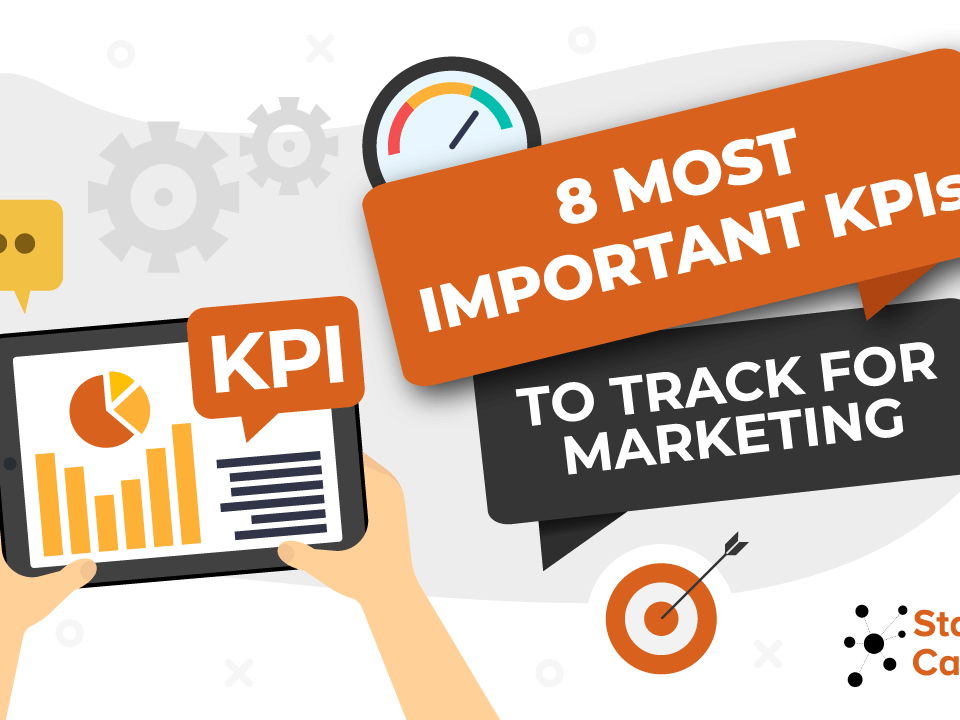
This Week in Social Media (August 2nd Week Edition)
August 16, 2016
This Week in Social Media (August 3rd Week Edition)
August 24, 2016SEMrush is a must have tool in your SEO toolkit if you’re serious about increasing organic traffic for your website.
What started as a simple keyword research tool is now the preferred online marketing tool of marketing professionals around the world. SEMrush is the ultimate SEO tool which helps you get deeper insights into your competition, identifies your top organic keywords as well as paid keywords, allows you to do a backlink analysis, and much more.
In this article, we’ll examine 6 ways you can use SEMrush to instantly improve your site’s SEO and crush your competition.
Note: You’ll need an active SEMrush account to try the techniques listed in this article. If you don’t have an SEMrush account yet, you can sign up for a free 30-day trial here.
6 Ways to Use SEMrush to Supercharge Your SEO
1. Identify your Competitors
One of the key aspects of SEO is to identify the competitors in your niche. It doesn’t matter which industry you belong to, you’ll have plenty of brands to compete with and learn from.
There is no better tool than SEMrush to map your competitors. The only tool that comes close is Ahrefs. Even with Ahrefs, the data obtained can sometimes be inaccurate. SEMrush provides you the most accurate data on your competitors so that you can start working on your strategy right away.
A quick search on “apple.com” on SEMrush search bar shows the following competitors:
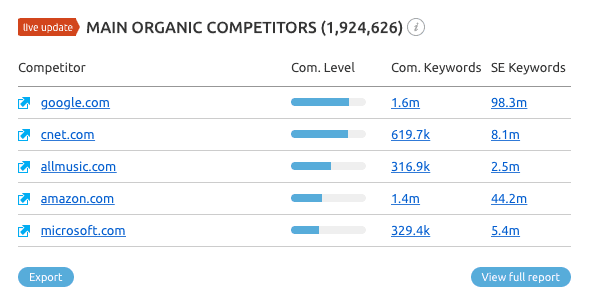
You can now click on any of these competitors to unravel data from each site and improve your own site’s organic SEO strategy.
2. Identify your Competition’s Top Content
SEMrush also allows you to extract your competition’s top ranking content.
Open up the Pages section on SEMrush to generate a report on your competition’s top ranking content.
This report shows all the pages your competitor has ranking in the top 100 Google search results.

Click on any of the posts/pages that is generating a massive amount of traffic for your competition. SEMrush will provide a further estimation of the organic search traffic, cost of that traffic, the total number of keywords that piece of content is ranking for, and additional data on backlinks and paid keywords.
Export the list of keywords onto an excel sheet for manual review and sorting. These are all the keyword variations you should use while creating your own content. Make sure these keywords are a part of your on-page SEO elements such as title tags, headings, body copy, alt text, URL, etc.
Also read: SEMrush vs Moz: Which is the Best SEO Tool for your Business?
3. Identify your Top Ranking Organic Keywords
Yet another SEMrush feature which is beyond useful.
Organic traffic is going to be one of the major drivers of traffic to your website. This feature allows you to review the top ranking organic keywords for your site and helps you determine how your organic SEO strategy is being executed.
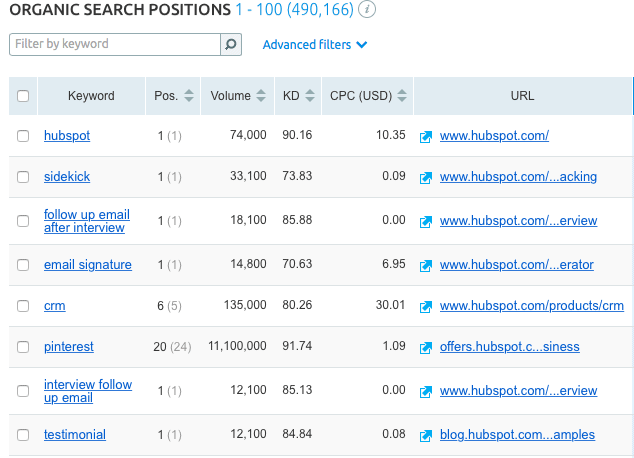
Type your domain name in the SEMrush search bar, pick organic research and examine the results. Don’t just focus on the list of keywords. Pay special attention to the first four columns on the right to determine how each keyword is performing in SERPs.
- Position
- Volume
- CPC
- Traffic
This will show you how your site is performing in the search engines and whether or not you need to tweak your organic SEO strategy to focus on a different set of keywords.
4. Find News Ways to Monetize Your Website
If you’re a blogger driving decent traffic to your site for certain topics, you’re probably always on a look out for new ways to monetize your website.
There are several sites out there who are willing to pay for the traffic you are driving through organic results.
As such, if you’re able to identify these sites and offer them advertising options on your website, you could earn an extra few bucks. SEMrush makes this incredibly easy.
Here’s how to use SEMrush to find new ways to monetize your site:
1. Go to Organic Research –> Competitors and enter your domain
2. Scroll down to the Organic Competitors table and select one of your competitors
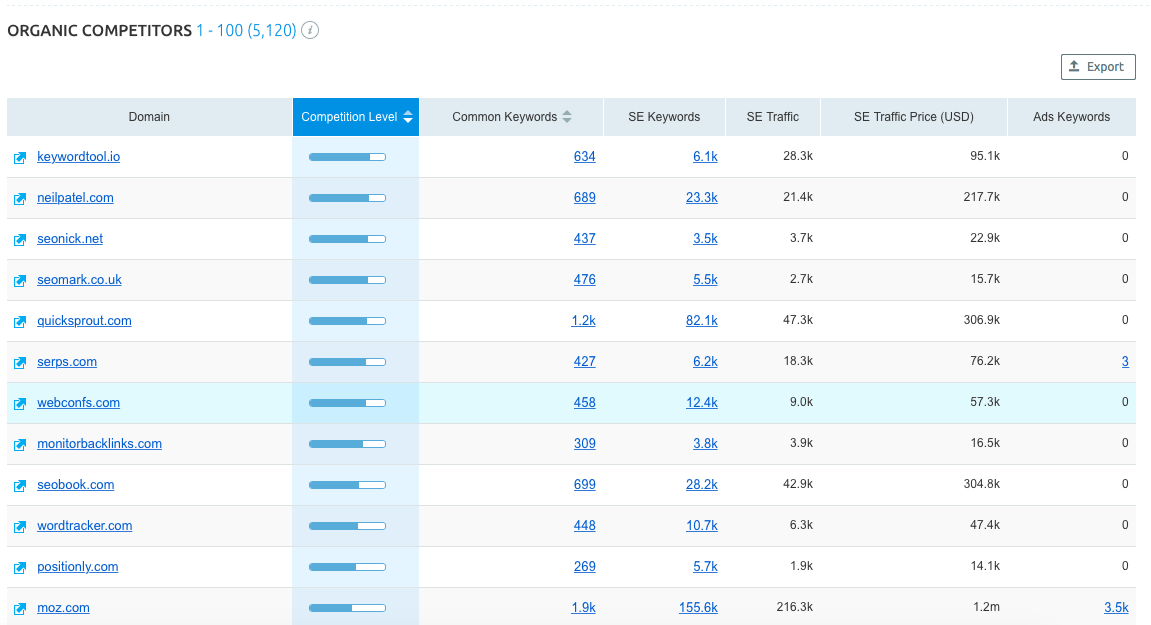 3. Check out the Ads Keywords column. For this example, let’s pick moz.com as it has 3.5 k ads keywords
3. Check out the Ads Keywords column. For this example, let’s pick moz.com as it has 3.5 k ads keywords
4. Next, click on the Common Keywords metric next to Moz
5. You’ll be taken to a Domain vs Domain comparison report. Set the filters so that you are returning the keywords that you rank for organically and your competitor is bidding on in paid search:
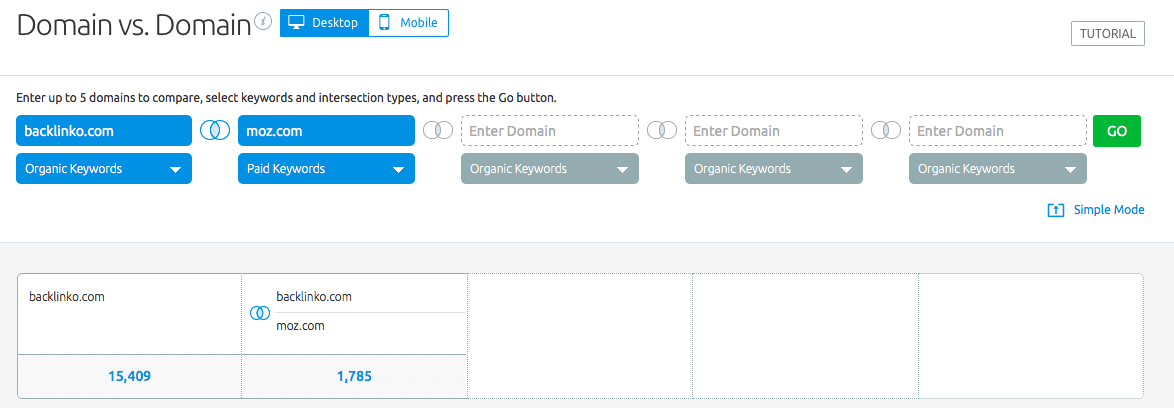
SEMrush will generate this report:
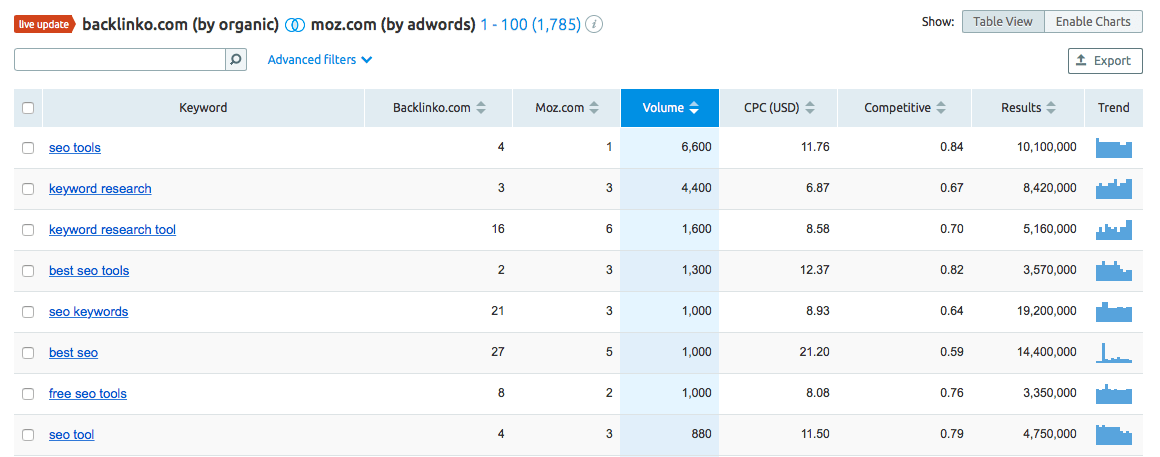
As you can see, the first result is for “seo tools”.
This indicates that while Moz is currently ranked #1 organically in SERPs, Backlinko is willing to bid for the phrase in order to rank #1 in paid search results.
So in order to make full use of this feature, reach out to some of the companies who are bidding on terms you’re ranking for and see if they are interested in placing ads on your site. Negotiate an ad fee and start monetizing the organic traffic on your site.
5. See the Breakdown of your Competitors
We already know how SEMrush helps us identify our top competitors. You can go a step further by reviewing your competitor breakdown.
Why is this important? Because when you do a competitor research on SEMrush, it produces a report which has hundreds, even thousands of organic competitors. The amount of data available can be overwhelming. As a result, it’s important to first consider your top 5 or 10 competitors and review their strategies individually.

The report on organic competitors is filtered by:
- Domain
- Competition Level
- Common Keywords
- SE Keywords
- SE Traffic
- SE Traffic Price
- Ads Keywords
With a detailed report from SEMrush, you’ll get a deeper understanding of what your competitors are doing, how you’re stacking up, and what you can do to improve your ranking in SERPs.
6. Find High Quality Link Building Opportunities
You can use SEMrush to not just to review your backlinks, but your competitors’ backlinks as well.
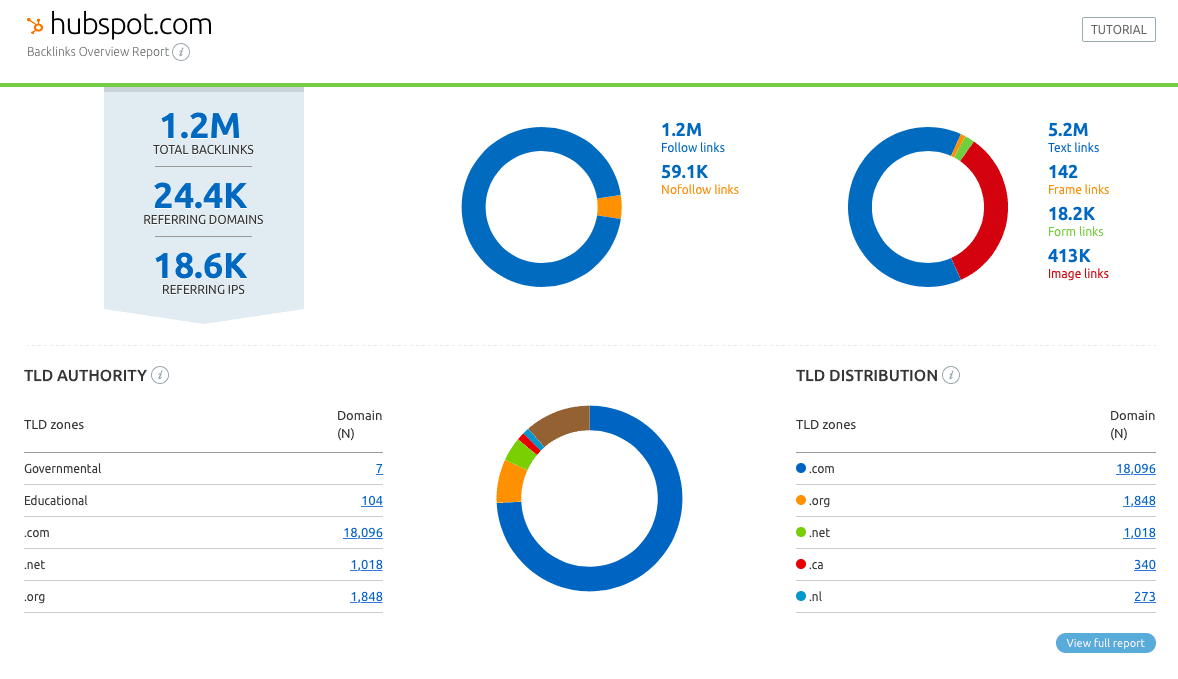
Backlink analysis on SEMrush reveals the following data:
- Total number of backlinks
- Follow/nofollow backlinks
- Referring domains
- TLD (Top level distribution) distribution
- TLD Authority (.com, .net, .edu, .gov, etc.)
- Referring domains by country
This feature allows you to get a deeper understanding of your competitors’ link profile and highlights new sources you can tap into to build new backlinks and referral traffic.
Once you’ve reviewed your competition’s link profile, use these link building techniques to build new backlinks for your site.
Over to you
Now that you know how to use these features on SEMrush, it’s time for you to test drive the product and see the results yourself.
If you haven’t used SEMrush yet, you can sign up for a free 30-day trial here.
This article was originally published on my marketing blog, 99signals.



